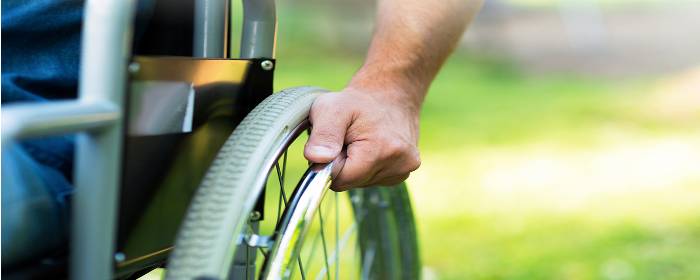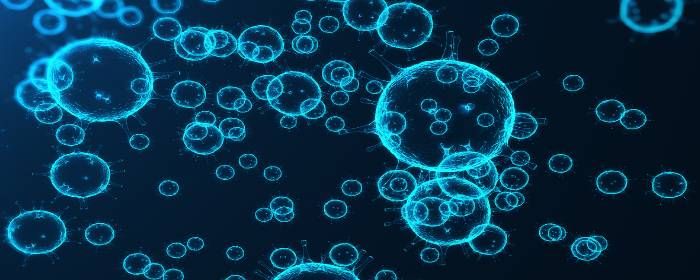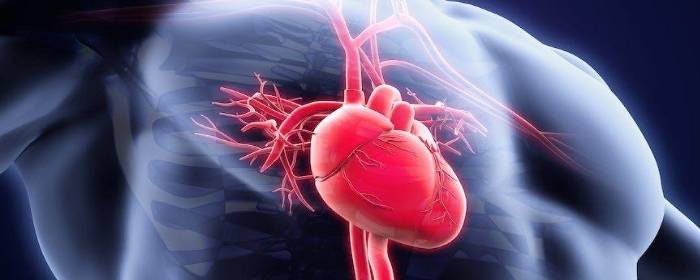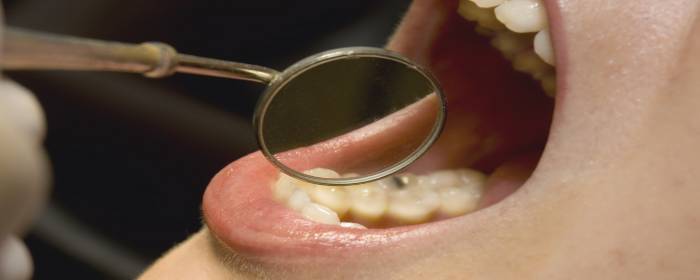
by admin | Oct 18, 2018 | Stem Cell Research, Stem Cell Therapy, Studies
A couple of weeks ago, scientists published findings showing that implanting human stem cells that are embedded within the engineered tissue can lead to the recovery of sensory perception in rats. The recovery of sensory perception is also accompanied by healing within the spinal cord and the ability to walk independently. The stem cells used in this experiment were collected from the membrane lining the mouth.
These results help demonstrate the potential for stem cells to help with spinal cord injuries but also point to the utility of combining stem cells with other factors to enhance their therapeutic effects. In this case, the researchers used a 3-dimensional scaffold to enable stem cells to attach and to stabilize them in the spinal cord. By adding growth factors, such as human thrombin and fibrinogen to the engineered tissue scaffolding, the researchers also increased the chances that attached stem cells would grow and differentiate.
The researchers compared the effects of their stem cell implants in paraplegic rats with the effects of adding no stem cells. Whereas the control rats who did not receive stem cells did not experience any improvement in mobility or sensation, 42% of the rats that did receive stem cells became better at supporting their weight on their hind limbs and at walking.
While these results are pre-clinical and do not apply directly to humans, the researchers conclude that further research is warranted. Given the positive impact of stem cells on the spinal cord in animals, it is reasonable to assume that stem cells may also benefit the human spinal cord. Further research will help clarify whether these stem cells can be adequately used to help treat patients with paraplegia.

by admin | Oct 11, 2018 | Stem Cell Research
Myocardial infarction, also known as heart attack, can be a devastating or even deadly event. It occurs when blood flow in one or more coronary arteries is blocked. Since coronary arteries supply blood to the heart muscle, a blockage in a coronary artery prevents oxygen and nutrients from reaching heart tissue.
While the heart can sustain short periods of time without oxygen or nutrients, heart cells become dysfunctional and die if blood flow is not restored within several hours. While clot-busting drugs, percutaneous intervention (PCI), and balloon angioplasty have provided a way to restore blood flow to the heart during a heart attack, once heart cells die there is no way to bring them back. Since most heart tissue is cardiac muscle, dead heart tissue cannot participate in the contraction or squeezing of the heart during a heartbeat. Thus, people who have survived a heart attack are often left with poor heart function (e.g. congestive heart failure).
Stem cell researchers have begun to question whether heart tissue destroyed during a heart attack is necessarily gone forever. Research is beginning to show that stem cells given after myocardial infarction are able to improve the squeezing power of the heart. By extension, stem cell treatment is able to improve the abilities heart to pump blood throughout the body.
Researchers initially assumed that it was the stem cells themselves that became new heart cells, replacing dead and dysfunctional heart tissue. While there is evidence that this occurs, it seems that stem cells play an even bigger role in heart tissue repair than simply becoming new heart cells. Stem cells release small packets of a material called exosomes and microvesicles. Exosomes and microvesicles hold proteins, cytokines, chemokines, growth factors, DNA, messenger RNA, and micro RNA. Researchers now believe that these materials hold the true power of stem cells in cardiac repair and regeneration.
Various types of stem cells produce exosomes that could potentially help repair a damaged heart. While cardiac stem cells may seem like an obvious source for these exosomes, induced pluripotent stem cells and mesenchymal stem cells are also capable of releasing exosomes that are potentially beneficial in cardiac repair.
Stem cells—or more accurately the exosomes contained within the stem cells—help repair damaged heart tissue in several ways. Stem cell-derived exosomes contain factors that promote the survival of vulnerable heart cells and cells that are dysfunctional after a heart attack (but not dead). Exosomes also help new blood vessels to form in and around the damaged heart muscle in a process called angiogenesis. These new blood vessels deliver oxygen, nutrients, and molecules that help support the growth and function of heart tissue. Exosomes also appear to promote a healthy immune system response after a heart attack, rather than a destructive inflammatory reaction. In other words, the materials found in exosomes guide the immune system to clear away damaged tissue without creating extensive fibrotic (i.e., tough, nonfunctional) tissue.
While most clinical trials thus far have studied the effects of stem cells directly infused into humans after myocardial infarction, exosomes are rapidly becoming the focus of future clinical trials in this area.

by admin | Sep 27, 2018 | Heart Failure, Stem Cell Therapy
People with heart failure may have trouble breathing, walking, and having a normal life. Current treatments for heart failure are aimed at making the healthy heart tissue pump harder (e.g. digoxin). On the other hand, treatments largely ignore dead heart tissue because there A myocardial infarction, better known as a heart attack, occurs when blood flow through the coronary arteries to the heart is blocked. This usually occurs when a blood clot forms in a coronary artery. Since the heart is a highly active muscle, it requires a constant supply of oxygen and nutrients to maintain its pumping function. When the heart muscle is starved of oxygen, as is the case during myocardial infarction, heart cells become dysfunctional. If blood flow through the coronary arteries (which carries oxygen to the heart) is not restored soon after a heart attack begins, those dysfunctional heart cells will die.
When heart tissue has been destroyed by a heart attack, patients are usually left with poor heart function. This can lead to congestive heart failure. One way to determine whether someone who has had a heart attack has suffered lasting heart damage is to perform an echocardiogram, or simply an “echo.” By performing an echo, doctors can estimate the heart’s ability to pump blood by measuring left ventricular function.
has been no known way to rescue it. With the discovery and use of stem cells, however, there is a chance that scientists may be able to rescue dead heart muscle and improve cardiac function.
In a study, researchers blocked the coronary arteries of experimental animals to cause myocardial infarction. Four weeks later, they injected either bone marrow-derived stem cells or adipose-tissue-derived stem cells into the heart. Impressively, blood flow significantly improved to the heart and heart function. Treated animals had substantially higher left ventricular ejection fraction, essentially reversing heart failure a full month after a heart attack. Shockingly, the researchers found that stem cells appeared to salvage dead heart tissue, meaning that the size of the damaged area was smaller after treatment.
While these incredible results will need to be replicated in humans, this research represents an exciting breakthrough in cardiology and regenerative medicine. The stem cell approach may be able to help patients who have had a heart attack, but could not get medical treatment in time to remove the clot.

by admin | Sep 24, 2018 | Stem Cell Research, Stem Cell Therapy
The application of stem cells to treat health disorders, diseases, and injuries has been rapidly expanding in recent years. The breadth of their application comes from the fact that stem cells are undifferentiated and can, therefore, differentiate into all sorts of cells with different specialized functions and therefore have an enormous number of potential ways that they can improve health. A review published in Frontiers in Physiology covers the way stem cells can be used for therapy of oral diseases.
According to the authors of the article, adult stem cells and induced pluripotent stem cells are the best types of stem cells to use to treat oral and maxillofacial defects. There are pros and cons associated with adult stem cells, including both autologous and allogeneic stem cells, as well as with induced pluripotent stem cells. For instance, whereas autologous stem cells can modulate the immune system, allogeneic stem cells appear helpful for malignant diseases, and induced pluripotent stem cells are unlimited in terms of their source and do not involve any ethical issues.
There are a number of potential sources for treating oral disease, including tooth germ progenitor cells, dental follicle stem cells, salivary gland stem cells, stem cells of the apical papilla, dental pulp stem cells, inflamed periapical progenitor cells, among others. While adults stem cells can differentiate directly into specialized cells or can be turned into induced pluripotent stem cells, induced pluripotent stem cells can be driven to differentiate into specialized cells.
Clinical trials have been undertaken to study the ways in which stem cells can address a number of oral diseases, including bone diseases, dental pulp diseases, eye diseases, facial diseases, and periodontal diseases, as well as tooth extraction. The strategies for treating oral disease with stem cells involve sorting and expanding the stem cells outside of the body, mixing them with materials and factors that help them grow, and implanting them into the impaired region.
Future research will help to delineate the different ways in which certain types of stem cells can best be used to address individual oral diseases. Studies will also help to uncover the specific types of stem cells that are best for specific diseases and the protocols that should be used to reap the greatest benefits for patients.

by admin | Sep 18, 2018 | Bone Marrow
The knee is a complex joint that must support the weight of the body while allowing the leg to bend freely. An important part of the knee joint is the meniscus. The meniscus is a fibrous cartilage structure that acts as a shock absorber. While these menisci perform very well during various strenuous activities, they can and do tear. In fact, a torn meniscus in the knee is one of the most common orthopedic injuries.
A torn meniscus of the knee often causes pain and swelling in the knee. Patients with a torn meniscus cannot squat or kneel, and the knee joint does not move smoothly. In fact, many patients with a torn meniscus describe the joint as popping, locking, catching or even “giving out.”
The meniscus of the knee can be torn in several ways; however, most torn menisci result from either one of two things: athletic activity or degenerative arthritis. As you would imagine, menisci torn during sport occur more commonly in young athletes such as dancers, certain kinds of track and field athletes, and basketball, soccer and football players. People with degenerative arthritis tend to be older and often have careers that require a lot of bending at the knee, such as carpet layers, carpenters, plumbers, etc.
Some people can live with small tears in their knee meniscus, but many people ultimately require surgery to fix the problem. One of the major approaches is to perform a total or partial meniscectomy of the damaged knee meniscus. Generally speaking, surgeons offer partial meniscectomy because patients heal faster, and results are about as good as a total meniscectomy. Unfortunately, surgical repair of these tissues is not always successful, especially in older individuals with tears related to degenerative arthritis. Consequently, surgical researchers are keen to discover new ways to improve partial meniscectomy to help people with meniscal tears of the knee.
One exciting option is using stem cells to potentially help patients regrow healthy meniscus after surgeons remove the damaged portion.
In one study, orthopedic surgeons at various surgical centers around the United States participated in an I/II, randomized, double-blind, controlled study to study the effects of human mesenchymal stem cells in people with a meniscal tear of the knee. Researchers recruited 60 patients who were eligible to receive a partial meniscectomy and sorted them into three groups: treatment group A received 50 million human mesenchymal stem cells, group B received 150 million stem cells, and group C (the control group) simply received an infusion of salt water. Patients received an injection of stem cells into the knee, 7 to 10 days after their partial meniscectomy surgery. Then researchers followed the patients for six weeks, six months, one year, and two years after the procedure.
Researchers found that some patients who received human mesenchymal stem cells had a significant increase in the size of their menisci after surgery. By contrast, no single patient in the control group had an increase in the size of their menisci. In other words, stem cells were found to be able to increase the size of the knee meniscus in some patients, as originally hypothesized. Likewise, the study authors could find no clinically important safety issues from injecting stem cells into the knees of patients. Perhaps most importantly, people who received mesenchymal stem cells reported a significant reduction in the amount of pain they experienced due to degenerative changes in the knee. In other words, partial meniscectomy plus stem cells apparently helped patients with degenerative arthritis of the knee.
The authors concluded that this research shows that human mesenchymal stem cells have the potential to be able to repair knee meniscus tissue and improve knee pain in people with meniscal tears. While additional research is needed, these results are very exciting for people who have torn menisci, especially older patients whose knee pain is a result of osteoarthritis or degenerative joint disease in the knee.






 St. Petersburg, Florida
St. Petersburg, Florida
